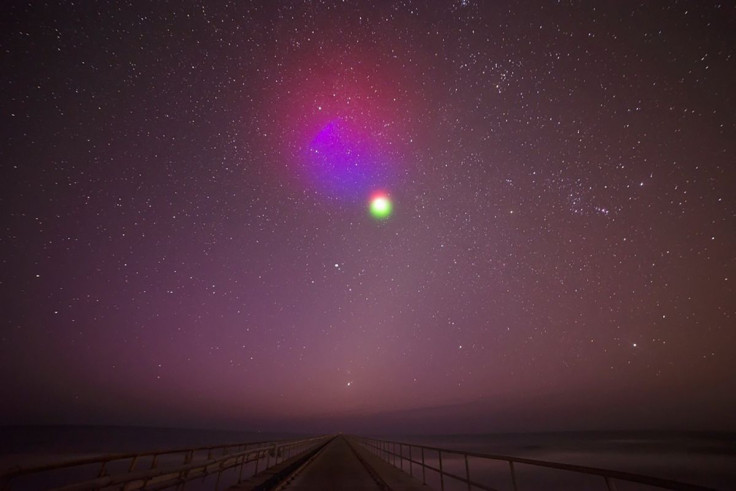NASA Rocket Launch Of Colored Clouds Rescheduled For Monday Evening

NASA will make a fifth attempt Monday evening to launch a rocket to help further research in cloud and particle movements in space. Previous launches of the Terrier-Improved Malemute sounding rocket have been scrubbed due to weather, winds and even boats. The most recently scrubbed launch was scheduled for Sunday night but canceled due to boats in the area where parts of the rocket might have landed, NASA’s Wallops facility said in a tweet.
The rocket is designed to bring up canisters of artificial clouds that, once released, will act as vapor tracers. The clouds are used to study particle movement in the ionosphere and aurora layers of the atmosphere, NASA said.
Read: 10 Of The Most Exciting NASA Missions Scheduled To Launch In The Next 5 Years
The 10 canisters will deploy about five minutes after the rocket launches releasing the blue-green and red colored artificial clouds along the mid-Atlantic seaboard. The rocket is taking off from NASA’s Wallops Flight Facility on Chincoteague Island in Virginia. If the fifth time’s the charm and all goes according to plan, the launch time will be between 9:04 and 9:19 p.m. EDT.
The clouds may be visible from New York City down to North Carolina covering much of New Jersey, Maryland and Virginia. A map from NASA shows the zone in which the clouds will likely be visible and how long after launch the clouds will appear.

The clouds that will be made from an interaction of barium, strontium and cupric-oxide and pose no threat to the residents or wildlife living along the mid-Atlantic coast. NASA will observe the clouds from two viewing points. One will be Wallops, and the other will be in Duck, North Carolina. Conditions must be clear at least one of the locations for NASA to go ahead with the launch. If you aren’t in the zone in which the cloud will be visible, you can watch a stream online of the launch and deployment of the colored clouds. Live coverage is expected to begin at 8:30 and visitors can begin entering the launch facility around 8 p.m., NASA said.
Read: NASA Jobs: The Application, Selection Process For How To Become An Astronaut
This launch will be the first test launch of the ampoule ejection system that will eject the contents of the canisters over far more space than previous missions have been able to by ejecting from the main payload. These canisters instead will eject six to 12 miles away from the main payload. The contents will be released anywhere from 96 to 124 miles high. About eight minutes after launch the payload is expected to land about 90 miles from Wallops Island out in the Atlantic Ocean, and it will not be recovered as some other NASA rockets sometimes are.
Updates on the launch, including whether it gets scrubbed again, can be found on the Wallops Twitter account and on Facebook.
© Copyright IBTimes 2024. All rights reserved.




















